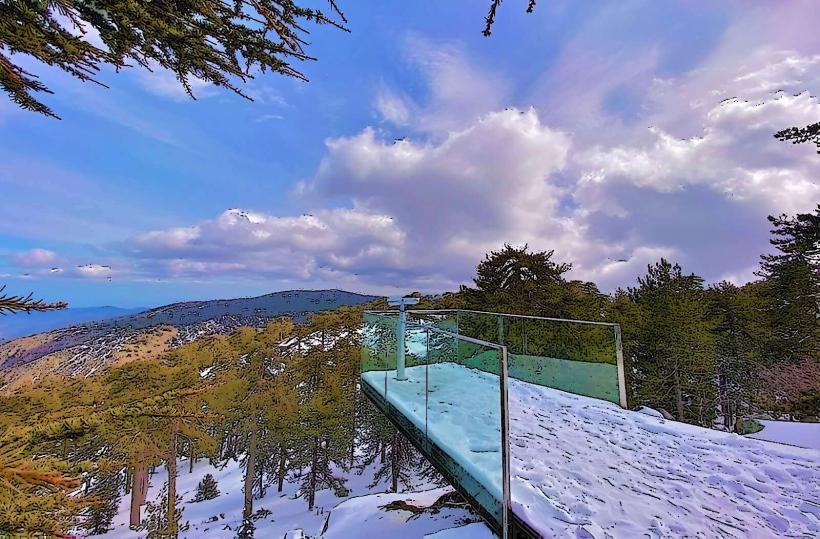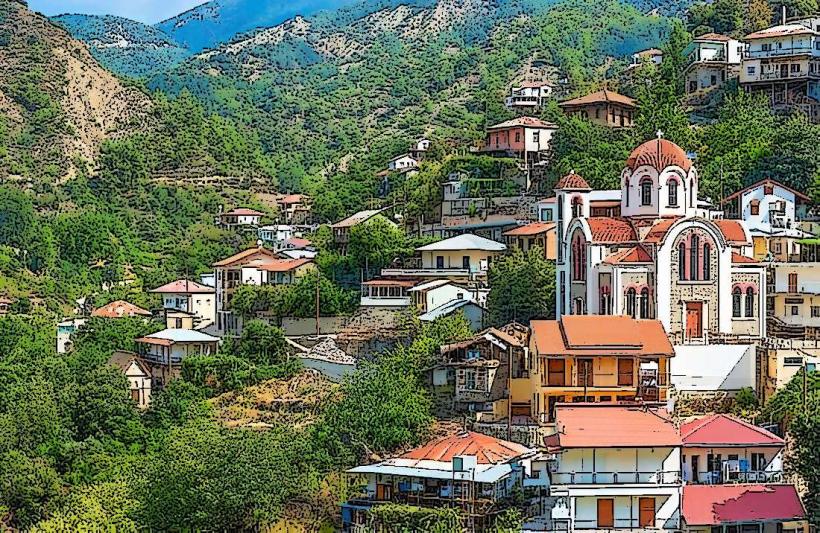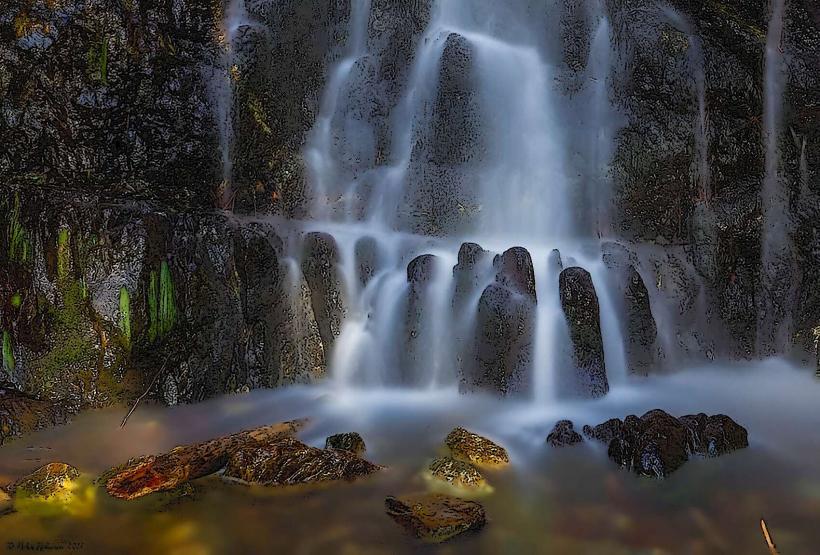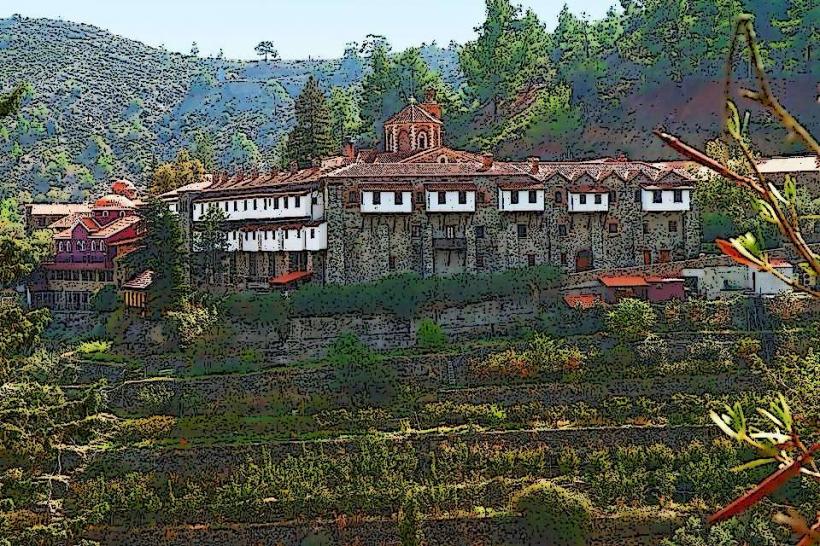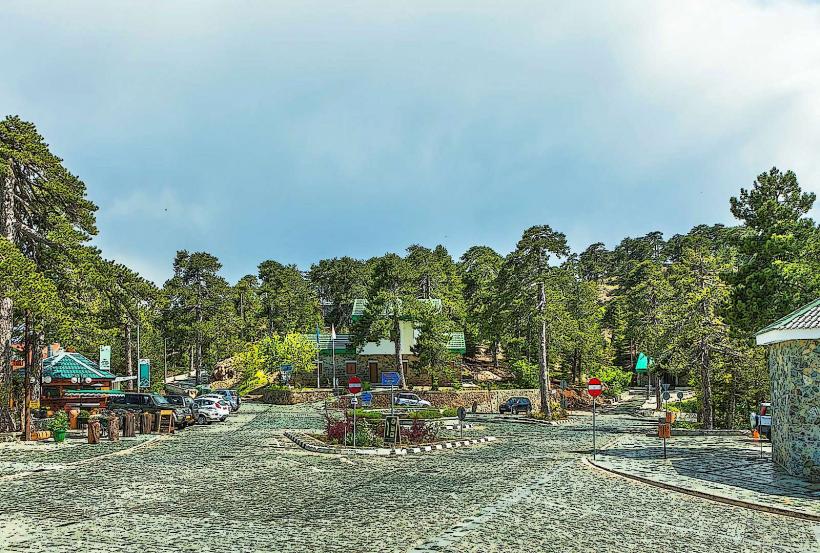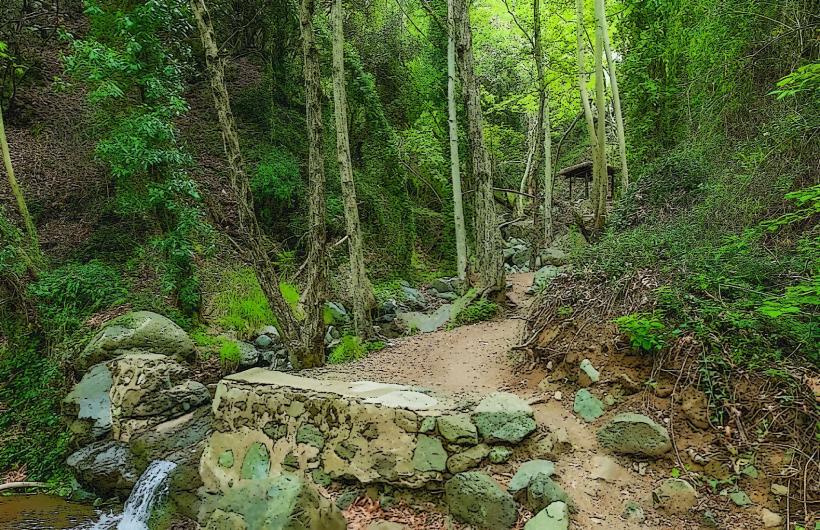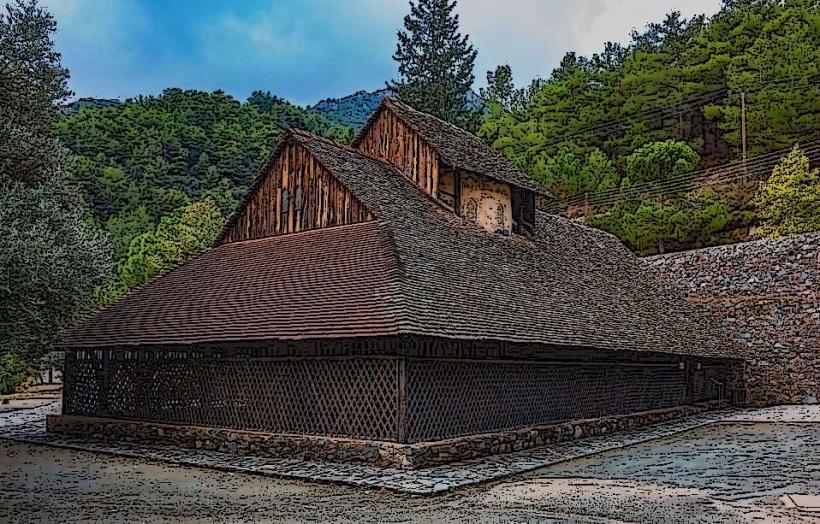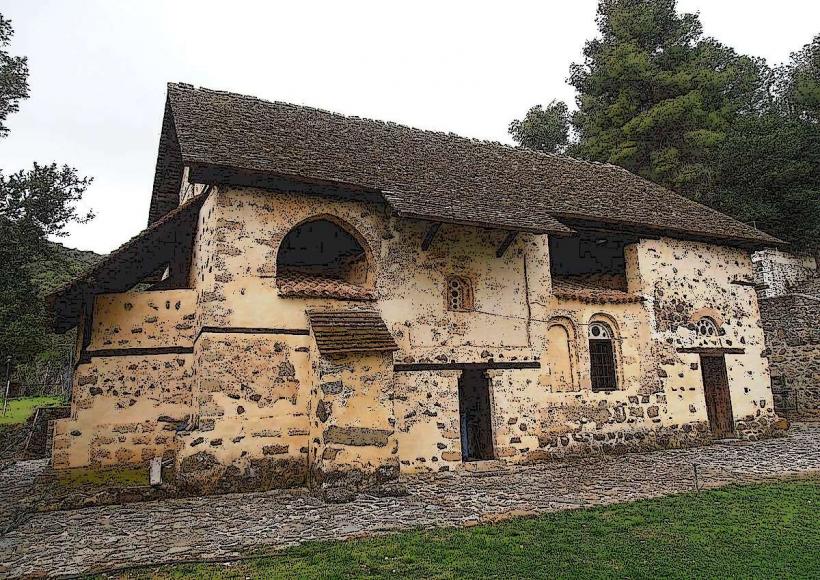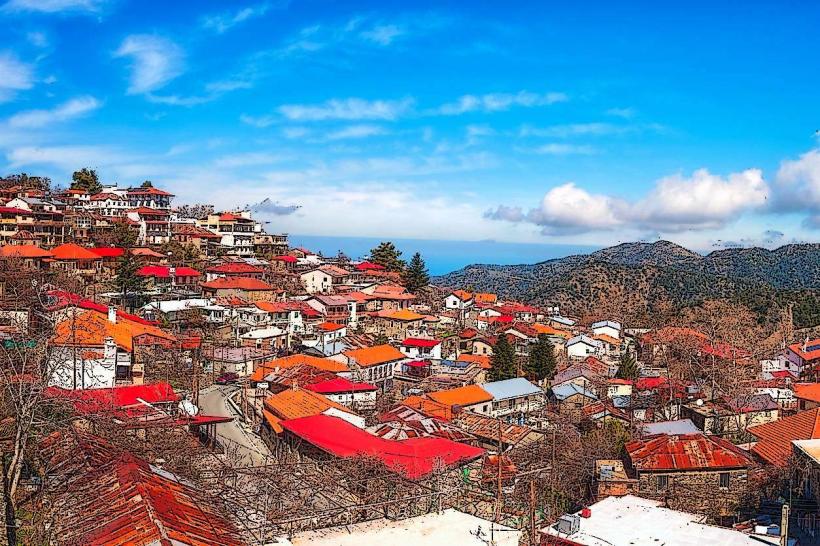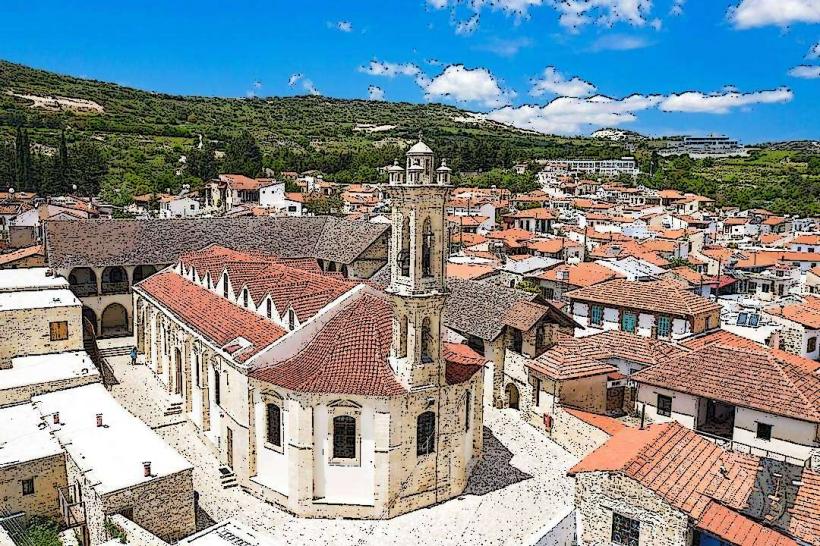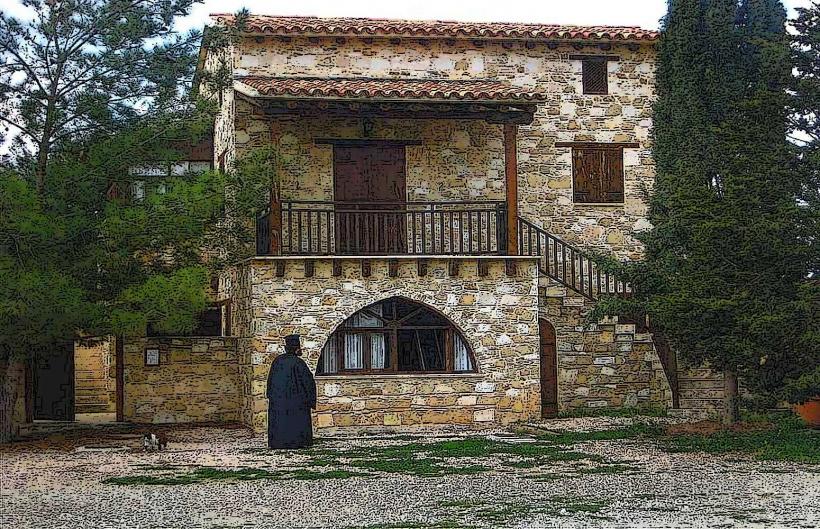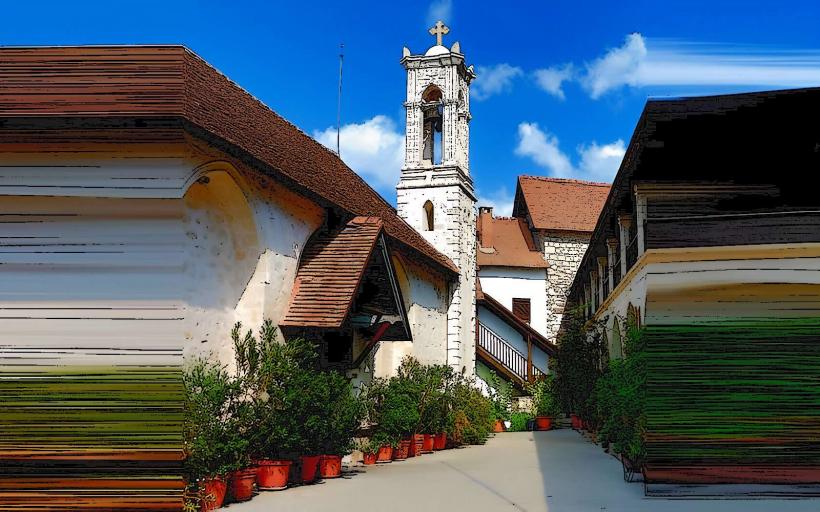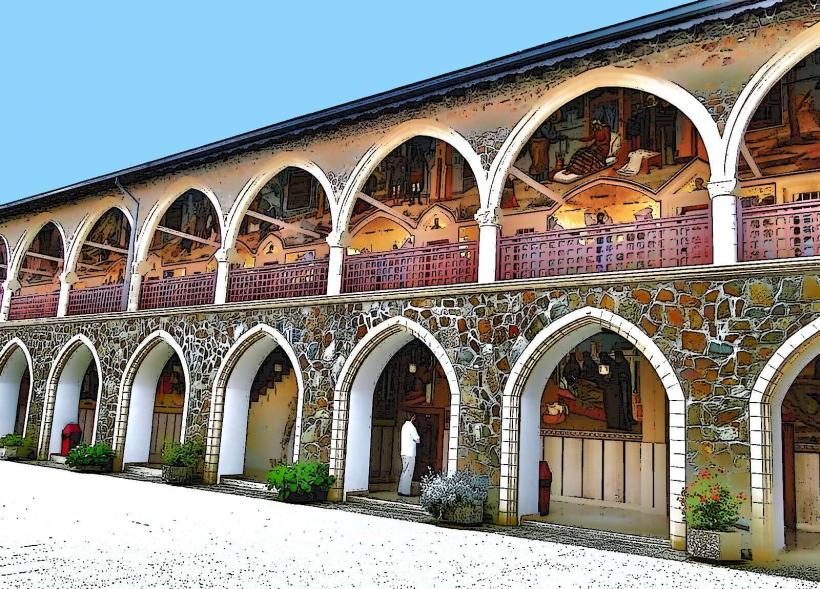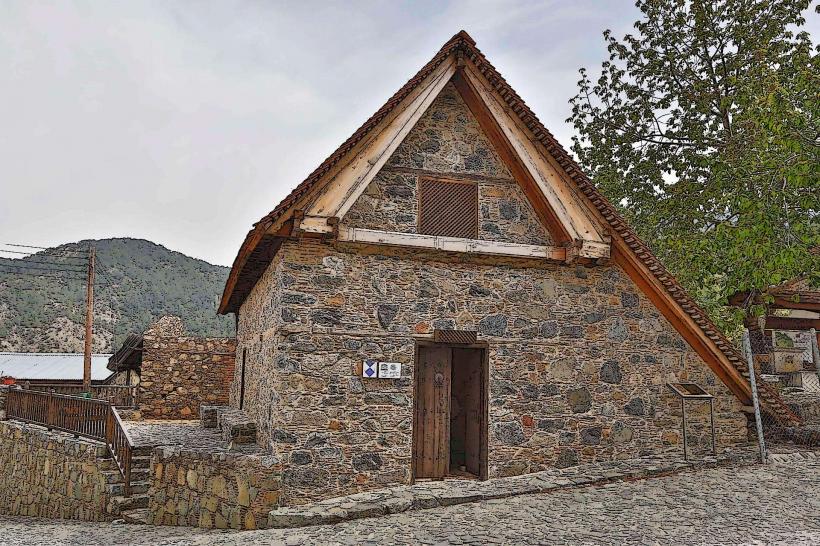Information
Landmark: Kykkos MonasteryCity: Troodos
Country: Cyprus
Continent: Europe
Kykkos Monastery, also known as the Monastery of the Virgin of Kykkos, is one of the most important and famous Greek Orthodox monasteries in Cyprus. Located in the Troodos Mountains, it is not only a significant religious site but also an iconic part of the island's cultural heritage. Here's a detailed overview of the monastery:
1. Historical Background
- Foundation: The Kykkos Monastery was founded in the late 11th century, around 1100 AD, by the Byzantine Emperor Alexios I Komnenos. According to tradition, the monastery was established on the site where the Icon of the Virgin Mary, believed to have been painted by Saint Luke, was discovered. The monastery has long been associated with the veneration of the Virgin Mary, who is considered the protector of Cyprus.
- Role in Cypriot History: Over the centuries, Kykkos has played a central role in the religious and cultural life of Cyprus. It has served as a place of pilgrimage, as well as a center of spiritual guidance. The monastery’s historical importance also extends to its influence on the island's politics and its connection to the Cypriot Orthodox Church.
- Destruction and Rebuilding: Kykkos Monastery has been damaged and rebuilt several times throughout its history due to various invasions and earthquakes. Despite these setbacks, it has remained a symbol of the resilience of the Cypriot people and their faith.
2. Religious Significance
- Icon of the Virgin Mary: The monastery is particularly famous for its icon of the Virgin Mary, known as the Kykkotissa Icon. According to tradition, this icon was painted by Saint Luke and is believed to have miraculous powers. The icon was initially housed at the monastery but has been moved to a protected location inside the church due to its importance. Pilgrims from all over the world visit the monastery to venerate the icon.
- Patronage: The Virgin Mary is the patron saint of the monastery, and the Kykkos Monastery is dedicated to her. The monastery's influence is significant within the Orthodox Christian community, and it has been a major religious site for Greek Orthodox Christians for nearly a millennium.
- Monastic Life: Kykkos remains an active monastery, with a small community of monks who follow the Eastern Orthodox monastic tradition. Services, prayers, and religious rituals are still performed regularly, and the monastery is an important place for spiritual retreat.
3. Architecture and Layout
- Byzantine Design: The architecture of the monastery reflects the traditional Byzantine style, with some Romanesque influences. The church and buildings are constructed using local stone, and the monastery complex includes a main church, cloisters, monastic cells, and a museum. The structure is built to blend harmoniously with the natural surroundings of the Troodos Mountains.
- Interior Decorations: The interior of the monastery's main church (the Katholikon) is richly decorated with frescoes, mosaics, and wooden carvings. The frescoes date back to different periods and showcase the Byzantine style, with scenes from the life of Christ, the Virgin Mary, and various saints. The iconostasis (wooden screen) in the church is intricately carved, and the overall atmosphere is one of serenity and devotion.
- Monastery Grounds: The monastery’s grounds are also beautifully maintained, with gardens, courtyards, and stone paths that allow visitors to explore the peaceful surroundings. The monastery is situated at an altitude of around 1,100 meters (3,600 feet) above sea level, providing stunning views of the surrounding mountains and valleys.
4. Kykkos Museum
- Collection of Artifacts: One of the major attractions of the Kykkos Monastery is its museum, which houses a remarkable collection of religious artifacts, including manuscripts, icons, vestments, and liturgical objects. The museum’s exhibits span centuries of Cypriot Orthodox Christianity and provide insight into the island's religious and cultural history.
- Historical Relics: The museum contains relics related to the monastery’s history, including items from the Byzantine and Ottoman periods. Visitors can view valuable liturgical books, illuminated manuscripts, and precious religious objects that reflect the long and rich history of the monastery.
5. Pilgrimage and Visitor Experience
- Spiritual Journey: Kykkos Monastery is one of the most significant pilgrimage destinations in Cyprus. Pilgrims often visit the monastery to venerate the Kykkotissa Icon, pray, and reflect in the peaceful mountain surroundings. The monastery offers a serene environment for personal contemplation and spiritual rejuvenation.
- Visiting the Monastery: The monastery is open to visitors year-round. While it is primarily a religious site, it is also welcoming to tourists interested in its historical and cultural aspects. The museum, church, and monastic buildings are open to the public, and visitors can explore the monastery grounds and enjoy the stunning natural landscape.
- Cultural Events: The monastery hosts several religious festivals and feasts, especially during the Assumption of the Virgin Mary (August 15), when large crowds of pilgrims gather to honor the Virgin Mary. During this period, the monastery holds special services and celebrations.
6. Cultural and Political Role
- Cypriot Identity: Kykkos Monastery has been a symbol of Cypriot identity and Orthodox Christianity for centuries. It has had a profound impact on the spiritual and cultural life of Cyprus, helping to preserve the island’s religious traditions despite foreign rule and occupation.
- Support for Cyprus: Throughout history, the monastery has also played a role in supporting the Cypriot population, particularly during times of conflict. It has served as a place of refuge for many, and its leaders have been involved in the political life of Cyprus, especially during the Cypriot independence movement in the 1950s.
7. Accessibility
- Location: Kykkos Monastery is located in the Troodos Mountains, about 20 kilometers west of the village of Pedoulas and roughly 30 kilometers from Nicosia. The monastery is accessible by car, and there are well-marked roads leading to the site. The journey through the mountains offers beautiful views of Cyprus' natural landscapes.
- Visitor Facilities: The monastery provides essential services for visitors, including parking, guided tours, and a shop where pilgrims can purchase religious items and souvenirs. The site is equipped with amenities to ensure a comfortable visit.
8. Conclusion
Kykkos Monastery is a remarkable blend of religious significance, historical heritage, and natural beauty. As one of the most famous and revered monasteries in Cyprus, it offers visitors a unique opportunity to explore the island's Orthodox Christian traditions, admire its stunning architecture and artwork, and enjoy the peaceful mountain surroundings. Whether you're visiting for spiritual reasons, cultural exploration, or simply to enjoy the serene landscape, Kykkos Monastery remains one of Cyprus' most treasured landmarks.

